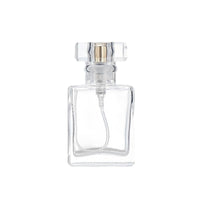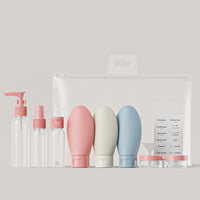Search
-
-
Types of Cosmetic...
Oct 16, 2024 -
Tailored Cosmetic...
Sep 26, 2024
Archive
- October 2024
- September 2024
-
- Tailored Cosmetic Packaging: Enhance Your Product Aesthetics
- Securing Your Pump Bottle: A Guide to Enhancing Safety with Our Innovative Packaging Techniques.
- Everything You Should Be Aware Of Regarding Top-Notch Travel bottles
- Airless Pumps: Understanding Their Functionality and the Perks They Provide
- Sustainable Lotion Bottles: What Sets Them Apart?
- Key Steps for Opening Airless Pump Bottles
- August 2024
Menu

The Importance of Packaging in Marketing|An In-Depth Exploration
Why Packaging Matters in Marketing: A Comprehensive Look
Product packaging goes beyond merely keeping a product safe; it plays a vital role in marketing by influencing consumers' buying decisions and shaping their interaction with a brand. Let's take a closer look at its significance.
What exactly is product packaging? Essentially, it’s the method used to prepare goods for transport, storage, logistics, sale, and eventual use. Think of it as wrapping a present—the product is the “gift” you want to present perfectly to your customers.
But packaging isn’t just about physical protection. It’s also about showcasing the product’s benefits, uniqueness, and quality. Effective packaging can evoke positive emotions and create a lasting impression. Why is packaging so important? Picture yourself walking down store aisles filled with similar products. It’s often the packaging that grabs your attention first, whether it’s through vibrant colors, striking graphics, or distinctive fonts. These elements play a crucial role in drawing customers to your product.
Packaging serves more than just a practical function; it has become a key component of product promotion. It’s responsible for conveying a brand’s story and reflecting its values. In consumer products, packaging acts like a silent salesperson, communicating the quality of your product and what makes it stand out.
Good packaging can also enhance brand recognition and loyalty. If the Coca-Cola logo and its iconic bottle shape come to mind when you hear "Coca," that’s a testament to the power of packaging. It makes the brand instantly recognizable worldwide, leaving a lasting impression.
Don’t treat packaging as an afterthought. Think of it as crafting a compelling narrative that your customers will want to be part of.
The Impact of Packaging on Marketing
Packaging is a crucial component of marketing strategy. It’s not just about putting a product in a nice box; it’s about reaching your target market and making a lasting impact.
Consider this: when you’re scrolling through social media, what catches your attention? Often, it’s the striking imagery and graphics. That’s the power of packaging—it works like a silent salesperson, constantly attracting new customers and encouraging repeat business.
Packaging is often the first thing a customer notices, making it a key element in a brand’s marketing strategy. First impressions are critical, and packaging is often the initial interaction between your product and the consumer. It’s an excellent way to communicate the quality of your product and the values of your brand.
Additionally, packaging plays a significant role in brand awareness. A unique and memorable packaging design can help your product stand out on store shelves, making it easier for customers to recognize and recall your brand. This can lead to repeat purchases and greater brand loyalty.
In the e-commerce space, packaging takes on even more importance. Online shoppers don’t have the opportunity to touch or feel a product before purchasing, so the packaging becomes a crucial aspect of creating a positive user experience and making a strong first impression.
Furthermore, sustainability is increasingly important in today’s market. Many consumers make purchasing decisions based on a brand’s commitment to sustainability. Incorporating eco-friendly practices into your packaging can attract environmentally-conscious shoppers and help distinguish your brand from competitors.

How Packaging Influences Brand Identity and Recognition
Whether you're a small business or a global brand, your product packaging plays a crucial role in defining your brand identity. Every element, from colors and fonts to imagery and logos, contributes to telling your brand's story.
A brand isn't just a catchy name or a cool logo; it's the overall experience, values, and emotions that customers associate with your product. A key aspect of building a strong brand identity lies in effective product packaging.
Why does packaging matter in marketing? Packaging is a physical representation of your brand—it needs to connect with your target audience, embody your brand's values, and be distinct enough to be instantly recognizable. For example, Coca-Cola’s iconic red-and-white color scheme and distinctive font are recognized globally.
Packaging can evoke positive memories or associations, influencing purchasing decisions and fostering brand loyalty. It serves as a direct communication tool between your brand and consumers, enhancing brand awareness. Elements like logos, imagery, and specific colors remind customers of their past experiences with your product, driving recognition and encouraging repeat purchases—all thanks to effective packaging.
In the growing world of e-commerce, packaging also reflects the quality and care put into your product for online shoppers. Think of premium packaging that feels like unwrapping a gift—this experience can create a positive emotional response, turning new customers into loyal ones.
The Role of Packaging in Product Protection
Imagine unboxing a long-awaited package only to find the product damaged—not the kind of experience you want associated with your brand. This highlights the importance of packaging in protecting products, especially during shipping and handling. But protection is just one aspect.
Packaging also preserves the freshness and quality of products, like food items, shielding them from environmental factors such as heat, cold, moisture, and dirt.
If a product's quality is maintained through proper packaging, it not only prevents damage but also upholds your brand's reputation. Secure packaging that prevents tampering builds consumer trust and confidence in your product.
Packaging is often closely tied to product marketing goals. Custom packaging that is not only durable but also reflects the brand's values shows that the company cares about its customers and their experience.
For instance, if a brand prioritizes sustainability, using biodegradable or recyclable packaging would demonstrate this commitment far better than any marketing campaign could. The packaging itself becomes a testament to the brand's values, leading to increased brand loyalty and customer satisfaction.
Additionally, packaging should be designed with user convenience in mind. Features like easy-to-open, resealable, and easy-to-store packaging not only enhance the product but also contribute to a better user experience.
The Role of Packaging as a Powerful Marketing Tool
Packaging is far more than just a protective layer for a product; it’s a powerful marketing tool that can significantly influence purchasing decisions. As the first point of contact between your product and the customer, packaging plays a vital role in creating a lasting impression.
Consider this: when scrolling through social media, what usually catches your attention? It’s the striking visuals and appealing graphics. That’s the influence of good packaging. It acts as a silent salesperson, constantly working to draw in new customers while retaining the loyalty of existing ones.
Packaging is an essential element of a brand’s marketing strategy because it’s often the first thing a customer encounters. First impressions are crucial, and packaging is that initial touchpoint that can communicate the quality of your product and the values of your brand effectively.
Packaging also has a significant impact on brand awareness. A distinctive and memorable design can make your product stand out on crowded shelves, making it easier for customers to recognize and remember your brand. This not only encourages repeat purchases but also helps build brand loyalty.
In the realm of e-commerce, packaging takes on an even more important role. Since online shoppers can’t physically interact with the product before buying, the packaging becomes a key factor in creating a positive user experience and making a strong first impression.
Additionally, in today’s society, sustainability is becoming increasingly important. Many consumers base their purchasing decisions on a brand’s commitment to environmentally friendly practices. By incorporating sustainable elements into your packaging design, you can attract eco-conscious shoppers and set your brand apart from competitors.
The Impact of Packaging on Consumer Choices
It’s often said that people judge a book by its cover — the same applies to products and their packaging. Packaging can have a profound impact on purchasing decisions, often on a subconscious level. This is especially true when consumers are faced with a wide range of similar products.
Packaging serves as an introduction to the product, setting expectations for what’s inside. An attractive, well-designed package can draw in potential buyers and create a favorable impression, while poor packaging can make a product appear less desirable and deter customers.
Consumers pay close attention to packaging details. Information such as ingredients, nutritional facts, a brand’s story, and production and expiry dates can all influence their decision-making process. A beautifully packaged product can evoke a positive emotional response, making the experience more memorable and increasing the likelihood of repeat purchases.
Understanding your target market is also crucial when designing packaging. Elements like colors, fonts, and imagery play a significant role in appealing to specific demographics. For example, minimalist packaging might attract eco-conscious and millennial shoppers, while bright, interactive designs could catch the eye of younger consumers.
Contact us
Add: No. 8 Building, Xinchengda Industrial Park, Wuhuan Road, Dongxihu, Wuhan 430040, China
(+86)18963979371
(+86)027-83372627
info@snpacks.com









